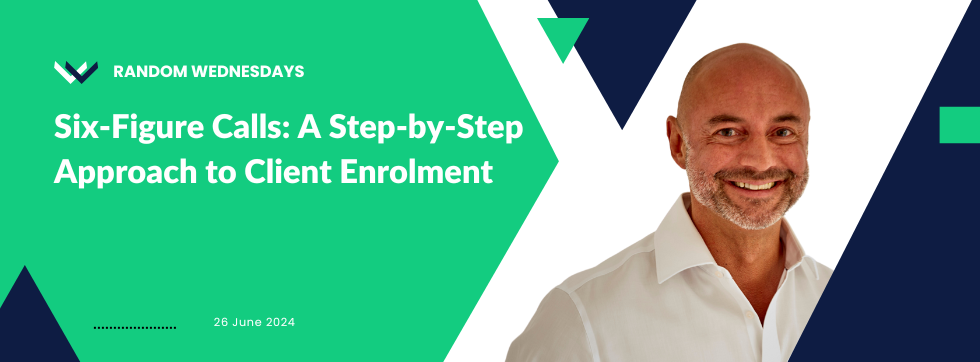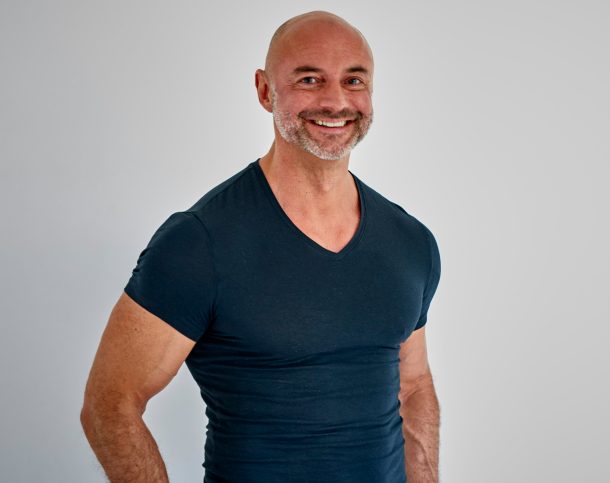Are you struggling to convert potential clients into paying customers?
Many coaches fumble through enrolment conversations.
Feeling awkward, pushy, or worse – ineffective.
The result?
Frustration, empty calendars, and dwindling bank accounts.
But what if you could approach these conversations with the same level of professionalism you bring to your coaching sessions?
Over the past 30 years, I’ve delivered thousands of enrolment conversations.
Here’s what I’ve learned: enrolment isn’t about pushy tactics or sleazy gimmicks.
It’s a scientific process – a set of carefully crafted steps designed to respect everyone’s time while achieving maximum results.
Today, I’m going to share a six-figure framework for enrolment conversations.
This isn’t about friendly chitchat or high-pressure tactics. It’s about professionalism.
How to deliver a high-end experience that aligns perfectly with the transformational work you do.
Let’s dive in.
1: Framing: Setting the stage
Framing isn’t just about your background – it’s the entire ecosystem surrounding your conversation.
Picture this: You’re about to start a video call with a potential coach.
Scenario A: You click the Zoom link. The coach appears, backlit by a window, wearing a wrinkled shirt. Kids are screaming in the background.
Scenario B: You enter the call. The coach greets you from a well-lit, quiet space. Behind them, a carefully curated bookshelf showcases thought leadership titles.
They’re dressed smartly, with a high-quality microphone visible.
Which coach are you drawn to?
Just as a masterpiece hanging in the Louvre commands more attention than the same painting in a coffee shop, framing sets expectations.
Unfortunately, countless coaches sabotage their success with poor framing.
To avoid this, consider:
- Recording a session and watching it back
- Critically assessing every element of your setup
- Make necessary improvements to scream “high-end transformation”
Your framing should telegraph your value before you say a word.
2: Breaking the ice: building rapport
Now, it’s time to build a connection.
Spend 3-4 minutes on light conversation:
- How you know each other
- People or things in common
You’re aiming for connection, not a therapy session.
Pay attention to non-verbal cues:
- Are they leaning in?
- Nodding?
- Mirroring your body language?
These are signs of strong rapport.
You’ll feel the shift when rapport is established.
The conversation flows effortlessly, and there’s a palpable sense of “clicking.”
3. Permission and process
Then ask for permission to guide the conversation:
“We could have a general chat today, or I can take you through a process that often leads to profound insights. Which would you prefer?”
By framing it this way, you’re:
- Acknowledging the rapport you’ve built
- Offering a choice, empowering the client
- Hinting at the value of your structured approach
Most clients will opt for the structured process.
Which means you can outline your transformational roadmap:
- Explore their current reality
- Identify limiting beliefs and roadblocks
- Uncover their deepest aspirations and ideal future
Then, dive in with powerful questions like:
- How do you currently see yourself in relation to [their challenge]?
- What beliefs might be holding you back from that vision?
- If you were living in complete alignment with your values, what would that look like?
4. Mapping your client’s journey
With those insights, it’s time to dive deeper into your client’s world.
Step 1: Present Situation Analysis
Explore their current reality in depth:
- How would you describe your current state of being?
- What aspects of your life feels most out of alignment right now?
- On a scale of 1-10, how satisfied are you with your current situation? Why that number?
Step 2: Future Vision Exploration
Help them articulate their desired future state:
- If we were having this conversation a year from now and you were thrilled with your progress, what would have changed?
- What does your ideal self look and feel like in this vision?
- How would this transformation impact other areas of your life?
Step 3: Obstacles and Past Attempts
Uncover what’s been holding them back:
- What specific strategies have you tried before to create this change?
- What obstacles keep appearing, no matter what you try?
- What absolutely needs to happen for you to achieve this transformation?
This process:
- Helps the client gain clarity on their own situation
- Demonstrates your experience in asking powerful questions
- Provides you with the insights required to tailor your offer
5. Serve powerfully
Now that you’ve mapped your client’s journey, it’s time to showcase your approach and provide value.
A: Acknowledge their sharing:
“Thank you for sharing so openly. I have a better appreciation of where you are, where you want to be, and what hasn’t worked for you so far.”
B: Request permission to share insights:
“I’d like to share some key insights about your situation based on what you’ve told me. How helpful might that be?”
C: Deliver high-level, transformational insights.
Offer 2-3 powerful observations that demonstrate your experience.
Then explain the significance of each insight.
6. Transition to your methodology
“Now that we’ve identified these key areas, I’d like to share the methodology I use to address them.
This is a step-by-step approach designed to take you from where you are to where you want to be.”
This is your turn to outline your transformational process:
For example: “My transformational process consists of four key steps:
- Core Value Alignment: We’ll uncover and align your actions with your true values.
- Deep Identification: We’ll explore the root desires driving your goals.
- Limiting Belief Transformation: We’ll reframe the beliefs holding you back.
- Embodied Change: We’ll create practices to cement your new way of being.”
Finally, it’s time to package your offer and if appropriate go further with the client.
“To guide you through this process, I offer a 12-week Transformational Coaching Program. This includes weekly one-on-one sessions, custom exercises, and ongoing support to ensure you achieve the change you’re seeking.”
Conclusion
Mastering enrolment conversations is a skill that can dramatically impact your coaching business.
By following a framework, you create a professional, high-value experience that respects your client’s time and sets the stage for transformational work.
Action step
Here’s your powerful action step to apply immediately:
Record your next three enrolment conversations (with permission, of course).
After each call, spend 15 minutes reviewing the recording.
Score yourself on each step of the framework we’ve discussed.
- Where did you nail it?
- Where did you stumble?
- What specific improvements can you make next time?
This deliberate practice will rapidly sharpen your skills and boost your conversion rate.
Start applying this today.
Commit to recording and analysing your next three calls.
Watch as your clientele – and your impact – grow.


